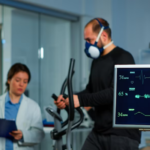
Welcome to our overview of Electroconvulsive Therapy (ECT), a mental health treatment that has generated a lot of debate over the years. Electrical currents are passed through the brain during ECT, commonly referred to as shock therapy, in order to cause a seizure. Due to its possible hazards and side effects, as well as its historical use as a form of punishment, ECT continues to be a contentious treatment even though it has been around for close to 80 years.
The first time ECT was used as a treatment for severe mental diseases including schizophrenia and depression was in the 1930s. Although ECT has undergone considerable administrative and technical adjustments over time, its contentious reputation endures. Others are opposed to its use because they are worried about potential hazards and the lack of knowledge about how it works, despite the fact that some medical professionals and patients contend that it is a safe and effective treatment. ECT’s indications, potential hazards and side effects, debates around its usage, and alternatives to ECT for the treatment of mental illness are all covered in this book. Join us on this adventure as we thoroughly examine this fascinating and debatable treatment.
How ECT Operates
knowing that ECT is a medical therapy that includes causing a controlled seizure in the brain using electrical currents is crucial to knowing how it functions. Before the electrical current is administered through electrodes attached to the scalp, the patient is first given a muscle relaxant and given general anaesthesia. Usually lasting less than a minute, the seizure is closely observed by medical personnel.
Despite its contentious image, ECT is nevertheless employed as a kind of treatment for mental illness because it can be successful in some circumstances. When other methods of treatment have failed, it has been demonstrated to be very effective in treating severe depression and bipolar illness. Although the precise mechanism of ECT’s action is yet unknown, it is thought to include modifications to the brain’s chemistry and the formation of new neural connections. It is now a safer and more bearable therapy option for patients because to improvements in method and administration that have reduced risks and side effects.
Guidelines for ECT
When previous treatments have failed to improve serious mental health disorders, ECT is frequently employed as a last resort. Major depression, bipolar disorder, and schizophrenia are some of the most typical ECT indications. Additionally, it may be applied when a patient is in danger of committing suicide or has significant symptoms that are impairing their ability to go about their regular lives.
ECT has been proven to be useful in treating these problems in a number of trials. For instance, ECT was found to be substantially more successful than a placebo in the treatment of depression, according to a meta-analysis that was published in the American Journal of Psychiatry. Another study revealed that ECT was successful in treating acute mania in bipolar illness patients, and it was published in the Journal of Clinical Psychiatry. The data suggests that ECT can be a useful therapy choice for patients dealing with severe mental health disorders, even though there are possible dangers and adverse effects.
Side effects and possible risks of ECT
Even though ECT has the potential to be a successful treatment for mental health issues, it does have some dangers and adverse effects. Patients may have headaches, muscle soreness, confusion, and memory loss in the short term. Cognitive impairment, including memory loss and attention problems, may be a long-term impact. Additionally, there is a chance of more severe side effects such cardiovascular issues or difficulties from anaesthesia.
It’s crucial for patients to undergo appropriate medical examination and monitoring before and after the treatment in order to reduce or control these risks and side effects. Additionally, drugs may be provided to patients to treat any discomfort or unfavourable consequences. Additionally, improvements in technique and delivery, such as the use of lower electricity dosages and the delivery of ECT while under anaesthesia, have assisted in reducing dangers and adverse effects. The potential hazards and side effects of ECT can be reduced with appropriate assessment and management, enabling patients to benefit from this successful treatment.
Disputations Regarding ECT
The debate concerning ECT stems from its early applications, when it was frequently used without anaesthesia and caused serious bodily injury to individuals. ECT has become a safer and more palatable treatment option thanks to improvements in methodology and administration, although there are still some issues.
The success of ECT in treating severe depression and other mental health issues, particularly when other therapies have failed, is one of its defences. Arguments opposing ECT, however, focus on worries about possible hazards and side effects as well as the lack of knowledge about how it functions.
Misconceptions regarding ECT include the idea that it’s a punishment method or that it’s used against patients’ will. It’s critical to realise that ECT is a medical technique that can only be carried out with the patient’s or the patient’s legal guardian’s informed consent. Furthermore, ECT is an effective therapy option for people who are dealing with serious mental health issues and shouldn’t be stigmatised or disregarded because of misunderstandings.
Laws and Rules Concerning ECT
In the US, ECT usage is constrained by both federal and state legislation. ECT devices have been categorised by the FDA as Class III devices, which need pre-market approval before being utilised in clinical settings. The use of ECT is also subject to state-specific laws, which may include requirements for informed consent and the use of anaesthesia.
Medical personnel who administer ECT must adhere to stringent regulations for patient assessment, therapy delivery, and monitoring. Professional associations like the American Psychiatric Association and the National Network of Depression Centres have established these recommendations. Following these recommendations makes using ECT as a therapy option for mental illness safer and more efficient.
ECT alternatives
In place of or in addition to ECT, there are a number of other treatments for mental illness. These include vagus nerve stimulation (VNS), transcranial magnetic stimulation (TMS), and medicine.
For mental health issues including depression and anxiety, psychotherapy and medication are frequently employed as first-line therapies, and they have been proven to be successful in many instances. TMS and VNS are more recent therapies that are gaining acceptance as ECT substitutes. They have showed promise in some studies, albeit their efficacy may vary depending on the patient and the particular mental health issue being treated.
To choose the appropriate course of action for their particular requirements and circumstances, patients should consult with their healthcare professionals. Alternative treatments may be better suitable for some people even if ECT may be a beneficial option in some cases.
Conclusion
In conclusion, ECT is still a contentious but viable choice for treating mental disorders in the US. ECT is still used as an effective treatment for serious mental health issues such schizophrenia, bipolar disorder, and depression despite its controversial past and present.
Medical practitioners are educated to reduce risks and protect the safety and wellbeing of their patients despite the hazards and side effects of ECT. For those who may not be good candidates for ECT, there are alternate treatments available.
Future advancements and modifications to the application of ECT as a kind of mental disorder treatment are possible. Further advances in the ECT’s safety and efficacy may result from ongoing research as well as technological and methodological developments. Additionally, ECT as a therapy option may be more widely accepted and used as a result of changes in how the general public views and understands mental health issues and available therapies.
Overall, ECT continues to be a significant and successful treatment option for mental illness in the US, and it will be interesting to watch how its use develops and changes over the next few years.
Read More You May Like:
- Electroencephalography (EEG): The Brain-Monitoring Technology and Its Applications
- Electrostimulation Therapy: Improving Muscle Strength and Function for Patients
- Electrotherapy for Pain Relief: A Comprehensive Guide
- Medical Imaging: How Electromagnetic Waves Are Used for Diagnosis and Treatment
- The Future of Electro-Medical Technology: Trends and Innovations to Watch








